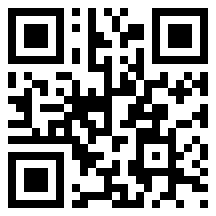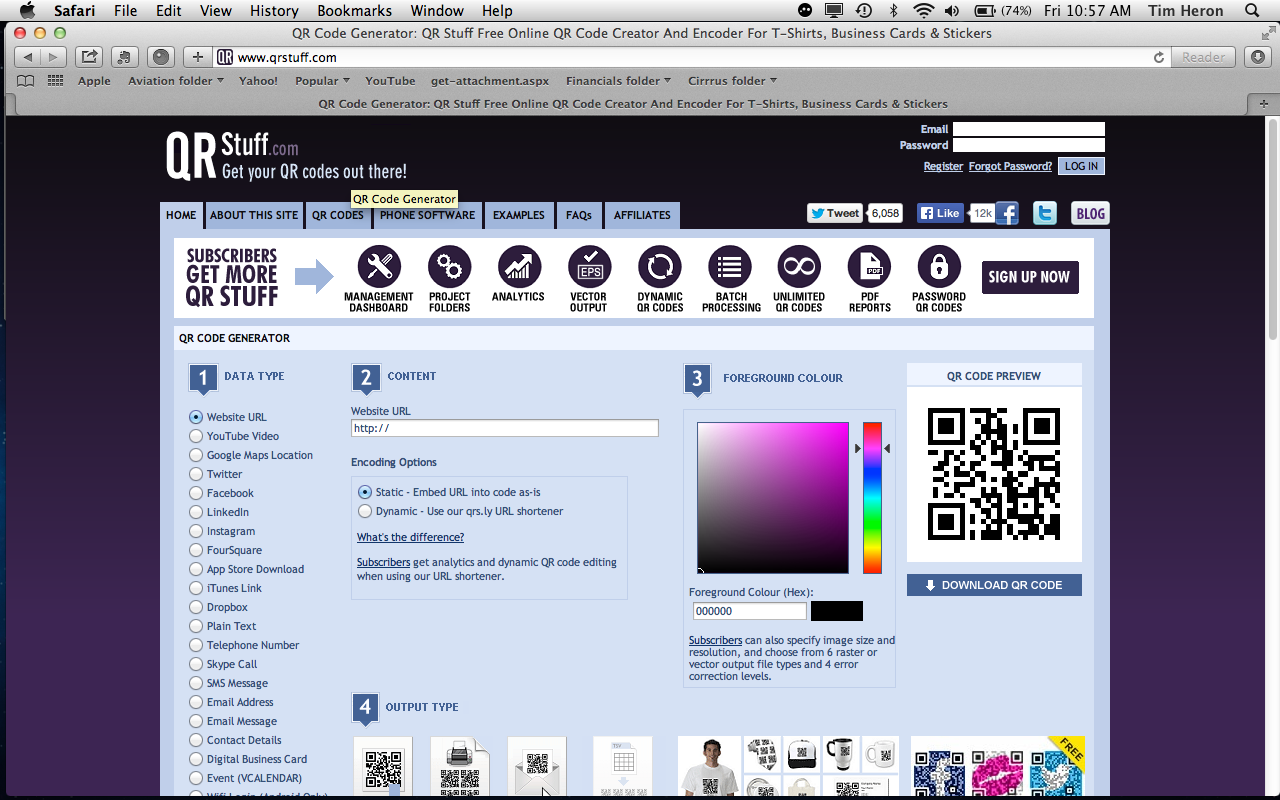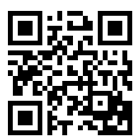Friday Focus on IFR: Using QR Codes in Instructional Lessons
8 August 2014 1500 Z
I apologize for the delay in posting the steps to incorporate QR codes into instructional lessons. I had a couple of challenges “cutting and pasting” content that had to be resolved. Enough whining. Here are the steps.
The following steps are designed to demonstrate how CFIIs (or CFIs) can use QR (QuickResponse) Codes to enhance instructional lessons with their students. QR codes, like their ubiquitous bar-code counterparts, operate on similar scanning principles. However, instead of a consumer receiving a price for an item–say at a retail market–QR codes direct users to web-based sites where they may have access to textual material, video clips, or audio excerpts.
For example, the QR Code shown below, if scanned by a smartphone or iPad equipped
with an appropriate “app”–I use Optiscan–would direct the scanner to the Double I,
LLC.com website where he or she would find Tim’s Blog, aviation resources,
publications, and information about an Instrument Flying book.
The steps to generate such a code follow.
QR Code Generation Steps
1. Go to your favorite search engine (e.g., Google, Bing, etc.) and type the search
term you seek using expanding or limiting symbols and methods. For instance, if
you are planning to teach a lesson on the use of GPS technology in aviation, you
might use the search term, GPS in the browser. However, to use this term alone
might yield in excess of 300,000 potential sites; too many sites to be practical. If
you limit your search by typing “GPS” +FAA +aviation -marine -cars, your
search might yield approximately 300 sites to explore, obviously a more
manageable result. The quotation marks, plus sign, and minus sign delimit the
search automatically.
2. Scan the most promising sources from the web search, noting the publication date,
the author(s) of the article, its authenticity, and other relevant information. Also,
note that some of the results from your search might be video sources (e.g., You
Tube videos), PDF files, or excerpts from reading material (e.g., books,
magazines). Note that a textual source describing GPS that is dated 2014 is likely
to be more useable and up to date than a source dated 1996. A video from the
Aircraft Owners and Pilots Association (AOPA) showing how to set up a flight
plan with a panel-mounted GPS is likely to more informative than a video that
comes from Tom, Dick, and Harry’s Flight School and Beauty Salon.
3. Click on one of the multiple search engine entries that your browser identified.
4. Scan/Read the entry to see if it meets the criteria you require for your lesson. If it
does not, close the entry and go to the next browser selection in the list. However,
if you do like an entry and want to use it, “copy” the web address from the
“toolbar” at the top of your page. For instance, here is a web address, courtesy of
msaviation.com, that illustrates how to use the Garmin 530 for IFR flying:
5. Now that you have identified and copied a website, return to your “toolbar” and
type the name of your preferred QR generator website. I use, and recommend,
www.QRstuff.com. The site looks like this:
6. Once on this site, click the HOME tab, located at the upper left corner below the
QR stuff header. Next, follow the 3 steps outlined in their sequence. With respect
to these steps do the following:
6.1. Under DATA TYPE (Step 1), check that the website URL is
selected (default setting). If your search produced a YouTube or
other video clip, click the second button in the sequence, labeled
YouTube video. (Note: You’ll then be given a choice to “paste”
the video URL in the box provided).
6.2. Whether text or video, the second step requires that you “paste” the
URL address in the box provided (in this case,
https://www.youtube.com/watch?v=rMGx_DFkWps), and click
the “Dynamic” button under the encoding options. If you want to
know the difference between the static and dynamic options, read
the highlighted link that is provided.
6.3. In Step 3, click on “Download QR Code button” that is found on
the far right side of the page below the sample QR icon. Once you
click on this button, the system software will immediately generate
a QR Code for you. (Note: I do not do anything with respect to
color; I simply let the code default to black and white.)
7. Once the code is generated, choose “Select All” from your edit pull-down menu and
copy the code. The QR code that the system generated for the msaviation YouTube
reference appears looked like this example.
8. Open a blank Word document, and “Paste” that code to the page.
9. Go to “Save As” and save the document using a reference term of your choice (e.g.,
Garmin video or IFR GPS video). I recommend saving the document in a format that
will allow you to later “paste” the QR code directly into the lesson that you are
preparing. You options might include saving the code as a .doc, .pdf, or converting it
to a .jpeg format.
That’s it! Congratulations on generating your first QR Code. With QR Code technology,
you’ll be well on your way to enhancing your instructional lessons with authoritative text,
compelling video clips, interesting animations, or on-point audio clips. In any of these
cases, your students will be well served.
+++++++++++++++++++++++++++++++++++++



Leave a Reply